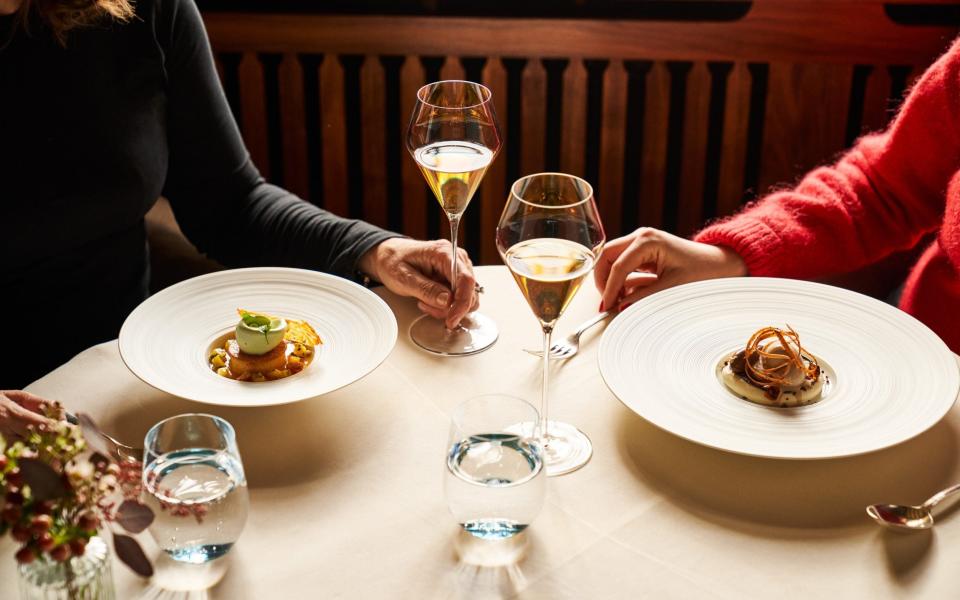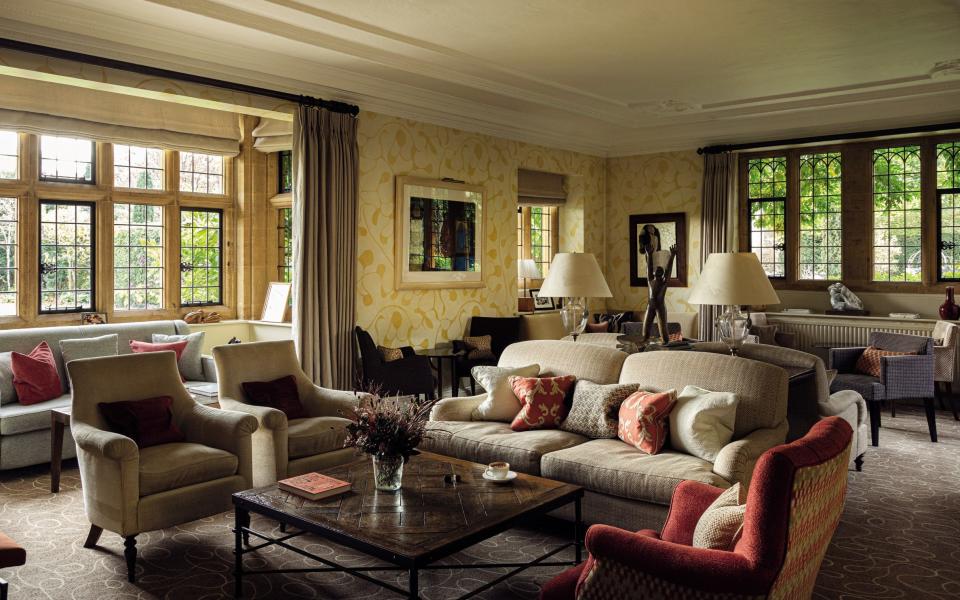As I strolled through the blooming gardens of Le Manoir, I spotted a familiar figure darting among the guests, enjoying an elegant afternoon tea. Chef Patron Raymond Blanc greeted everyone warmly and asked, “What can we do better?” Not the obvious question from an acclaimed industry veteran, but it’s refreshingly free of bombast and ego.
Some 40 years since the opening of this groundbreaking property, Blanc’s exuberance and boundless energy is remarkable. Especially considering how seriously ill he became a few years ago. Floored by Covid, he spent a month in intensive care, fighting for his life. Apart from a little shortness of breath, he is a force of nature today, his passion for hospitality has remained undiminished over the decades.
Case in point: our interview, scheduled for two hours, ended up lasting over six hours and only ended when dinner could no longer be postponed. From inspecting the countless species growing in the greenhouses (Blanc was an early adopter of organic produce and sustainability) to explaining the stories behind countless sculptures spread across the 27 hectares, Blanc animatedly recounted the origins of Le Manoir.

Recalling his first visit in the early 1980s, blue-eyed from a long service leading predecessor Les Quat’Saisons, he said: ‘I was leafing through Country life magazine and saw the house for sale. After countless espressos, I entered my old Opel to talk to the owner, Lady Cromwell. I explained that I wanted to buy her house.”
Somewhat cynical that this over-caffeinated young man would have the money to buy her vast estate, which was in dire need of repairs, she turned red when I told her my name and left to make tea. When she came back, she said, “Yes, Mr. Blanc. I will sell you my house.” Her decision was based on a previous family visit to my restaurant, when she was impressed by the friendliness and knowledge of my team.”
Britain was in a deep recession at the time. Using his renowned reputation to raise money, Blanc retained 51 percent of the sales. By the time the old mansion was renovated, the costs were well over £1 million over budget. It initially opened with 10 bedrooms. Within a year the restaurant received a Michelin star; the second followed shortly afterwards.
Blanc soon realized that the bedrooms were generating twice as much profit as the restaurant and decided to triple the size of Le Manoir. His friend Martin Skan, one of two brothers behind the luxury Chewton Glen hotel in New Forest, recommended surrounding himself with the best in the business, which led to the recruitment of pastry chef Benoit Blin, whom he left in 1995. chased France away.


Le Manoir spearheaded the growing trend for innovative restaurants in a luxury hotel environment. Esteemed chefs who have followed suit include L’Enclume by Simon Rogan in the Lake District, Northcote by Lisa Goodwin-Allen in Lancashire, Hand and Flowers by Tom Kerridge in Marlow and Ynyshir by Gareth Ward in Ceredigion, Wales .
Simon Rogan says: “It’s mind-boggling to think of all the names that have come out of Raymond Blanc’s kitchen and he has inspired me enormously as a young chef. His spectacular, innovative cuisine set the bar considerably higher. Then came his obsessive desire to grow his own organic produce of perfect quality” (something Rogan implemented at the three-Michelin-starred L’Enclume). He continued: “For me he was the pioneer in this field; a farm-to-table visionary who influenced an entire generation, including myself.”
Blanc showed me a selection of his favorite bedrooms and explained: “I am very involved in the design. The rooms are all different, inspired by my travels.”


I spent the night at L’Orangerie, a successful mix of limed oak, stone and marble with a French chateau feel. Although most of the rooms were designed more than 20 years ago, they are in pristine condition. Yet they will soon undergo a facelift; costs are no longer Blanc’s responsibility since its sale to luxury hotel group Belmond in 2014 (which was acquired by luxury giant LVMH five years later).
There are plans to add a dozen more bedrooms – the number changed every time Blanc mentioned it; his brain is not always in sync with his zeal.
Further innovation is on the way. Although the vines have yet to be planted, Le Manoir’s own wine blend is already in the works with local vintners. In the same way that Blanc teamed up with scientist Nicholas Kurti to explore molecular gastronomy – which one of his protégés, Heston Blumenthal, famously went on to develop (with his blessing) – they have been working on revolutionary methods to speed up wine production.
When I inquired about the Belmond acquisition, Blanc became overwhelmed. “I lost most of Le Manoir due to a severe recession and a transition period of buying and selling. It is difficult, complicated and personal, and it has hurt me.” Does he still have a sense of decency? “Emotionally, intellectually, in terms of vision and the context of everything, yes, but it’s not my place. Honestly, it doesn’t matter. I am the keeper and we are fireflies passing by. The whole point is to leave something beautiful behind, not for yourself.”
You could argue that part of his legacy is the massive hotel room rate inflation we’ve seen in recent years. While prices at Le Manoir officially start at £690, a quick look at the online booking tool shows that there are no rooms for less than £935 between now and the end of this year. A Saturday evening in mid-June costs £2,855 for a one-bedroom suite, including breakfast. Dinner costs £245 per person.


But Le Manoir has always been expensive, and Blanc makes no apologies for the high prices that come with this level of luxury. With a large workforce (including former apprentice Marco Pierre White’s daughter, Mirabelle, in the pastry shop) providing exemplary service and the current economic climate, profit margins are not nearly as high as you might think.
So what do these prices really get you? When I finally sat down, it became clear that this was not only a gastronomic experience par excellence, but also a theatrical event. My fellow diners were a mix of regulars and people celebrating a special occasion; they were all treated like VIPs. The menu is a love letter to fresh produce and includes Blanc’s classic beetroot terrine with horseradish sorbet; a dish so perennially popular that he will be serving it at this year’s Royal Ascot by popular demand.
As his 75th birthday approaches in November, does taking a step back have any appeal? “I’m not interested in retirement. I will be working fewer crazy long days, but I want to see Le Manoir continue to grow and evolve.”
Shelley Rubenstein traveled as a guest of Le Manoir Aux Quat’Saisons (01844 278 881; belmond.com), which offers double deals from £690, including breakfast.